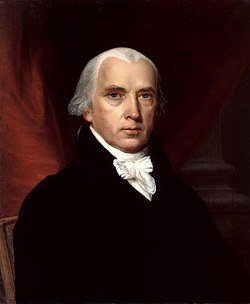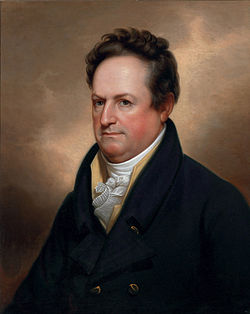| |||||||||||||||||||||||
| |||||||||||||||||||||||
| |||||||||||||||||||||||
| Elections in Tennessee |
|---|
 |
The 1812 United States presidential election in Tennessee took place between October 30 and December 2, 1812, as part of the 1812 United States presidential election. Voters chose eight representatives, or electors, to the Electoral College, who voted for President and Vice President. [1]
Contents
Tennessee voted for the Democratic-Republican candidate, James Madison, over the other Democratic-Republican and Federalist supported candidate DeWitt Clinton, but the exact election results are unknown. [2] [3] [4]


